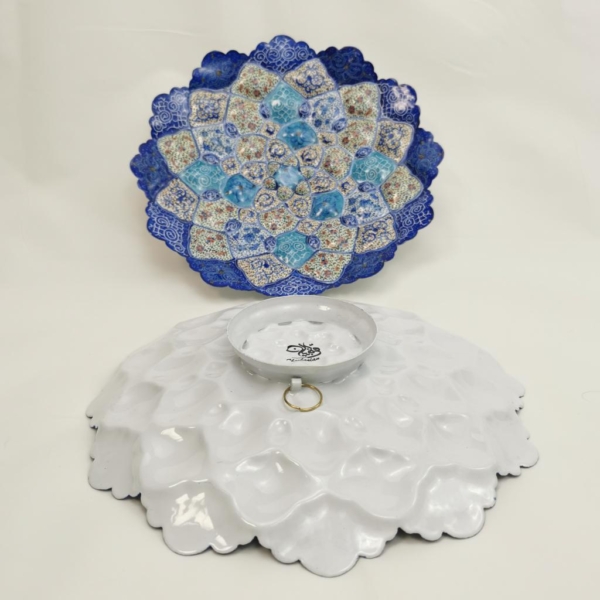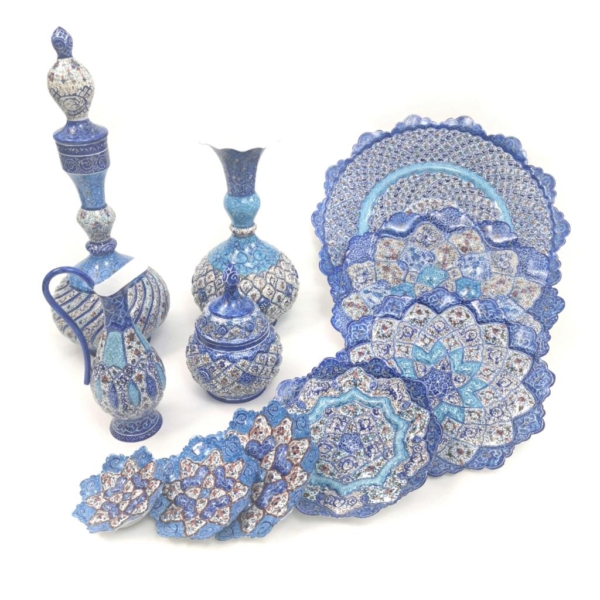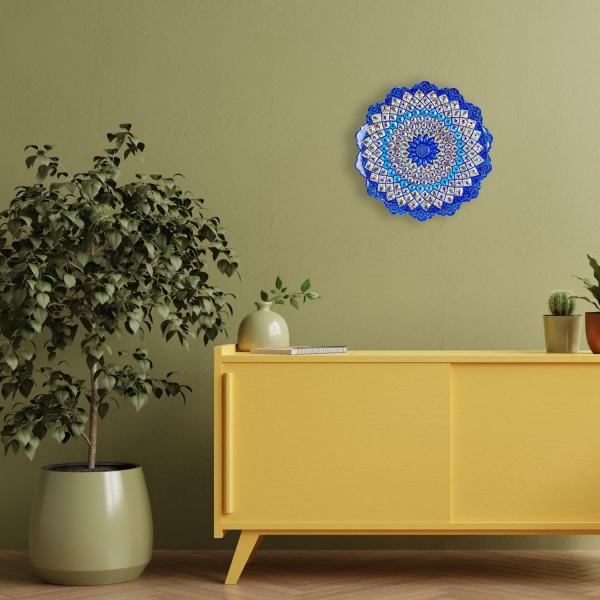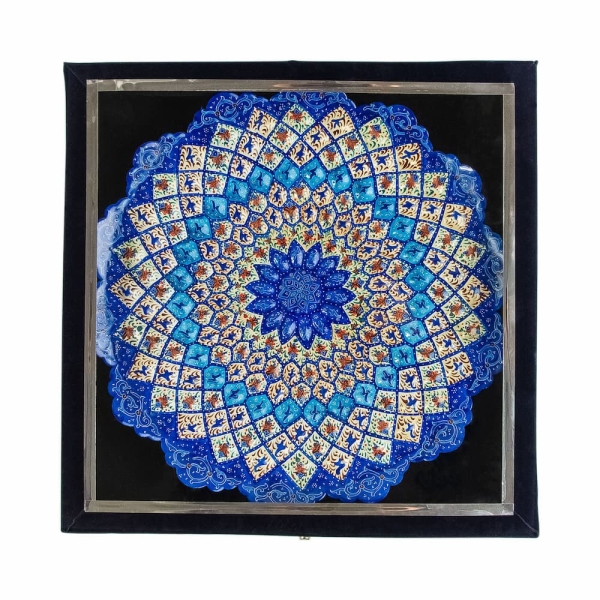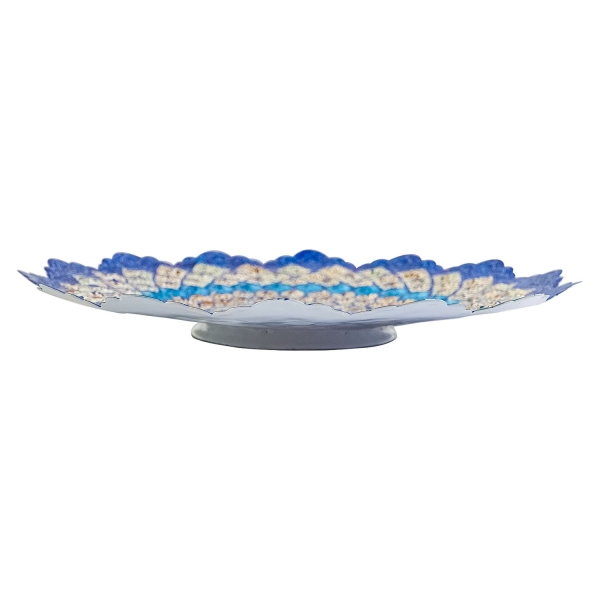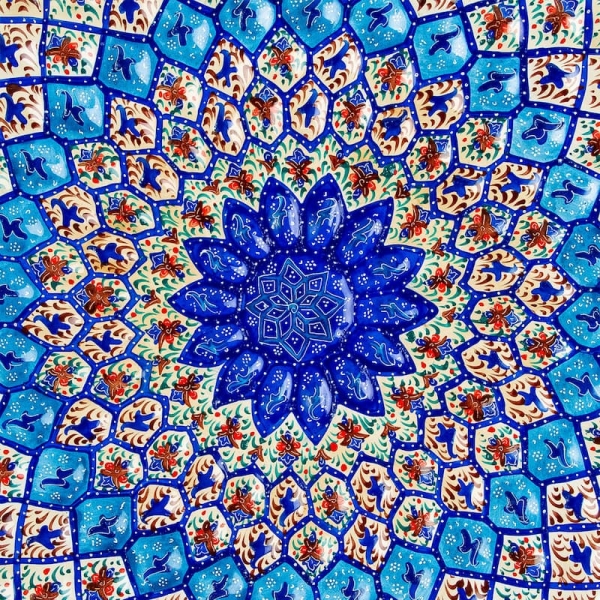Minakari Fish Pond
The Minakari fish pond is inspired by the ancient ponds of Iran.
- Diameter 16 cm
- Material: Minakari on Copper
- Painted with acrylic-resin paint
- The floor paintings of the pond are three-dimensional oysters.
- Artist: Zeinab Moeini
FISH POND
Minakari is a type of decorative art that involves the application of colorful enamel to metal surfaces. It is a popular art form in Iran, and minakari-decorated objects such as vases, trays, and jewelry are often used as decorative items in homes. A Minakari fish pond is likely a fish pond that has been decorated using the minakari technique, in which colorful enamel is applied to the surface of the pond in intricate patterns or designs. The Minakari fish pond may be a decorative feature in a garden or outdoor space, and it may be used to house fish or other aquatic animals. It is important to properly maintain a fish pond in order to keep the water clean and healthy for the animals living in it. This can include tasks such as cleaning the pond, maintaining proper water circulation and filtration, and monitoring water chemistry. The specific requirements for maintaining a fish pond may vary depending on the size and type of fish or aquatic animals living in the pond, as well as the local climate and environmental conditions.
About the artwork:
The artwork you are purchasing is called Mina with a rich old history of around 5000 years. Mina means blue in ancient Persian language and the blue colour in this artwork is a symbol of heaven’s sky. Although blue is the traditional colour in this art however, the contemporary Mina handcrafts could be found in a variety of colours these days such as green, grey, pink and etc.
Mina indeed is the art of painting and colouring on the surface of metal objects. The paint used in this artwork in most cases is prepared by metal oxide powders. Such metal powder, however, is mixed with special oils and solvents to form a creamy paint. The cream is then used to paint the object. Different metal oxide also produces a different colour.
Besides the preparation of paint cream, the desired objects which are mainly made of copper are created by hammering and forming. These objects have a long list of shapes including vases, plates, containers and etc. After forming the objects they should be cleaned thoroughly prior to being covered with white enamel coating. The cleanness of the surface is very important at this stage since very minor dirt or even hand oil or moisture could cause a crack in the final product. The enamelled object then is baked in the furnace at around 700° in a few stages.
Once the object is baked and cooled down, the already unique designed pattern of each item is transferred to the object’s surface. This is usually done by drawing on the paper first and punching small holes near to each other on the lines drawn on the paper. Graphite powder is usually used to mark on the metal surface through paper tiny holes. The white-coated copper object with marked lines then is painted carefully and artistically by hand. This stage is almost the most important part of the artwork and indeed the spirit of the Mina. The artist spends lots of time to handle the details of the painting trying to make it unique, modern and beautiful.
The final object is again needed to be baked in the furnace for stabilizing the colour at around 800°. As a result of using metal-based paints and baking procedure, the Mina colour is stable, washable and anti-scratch.
















